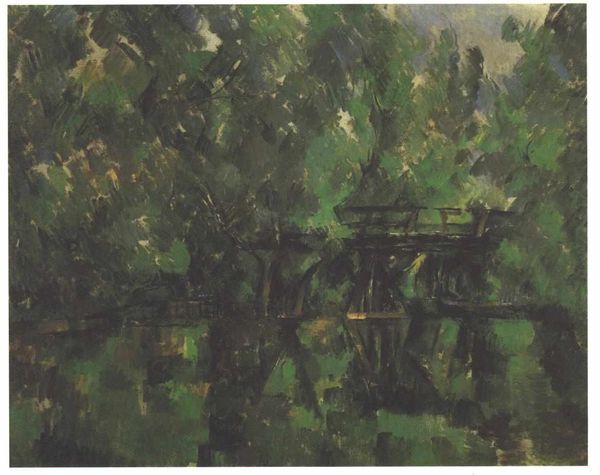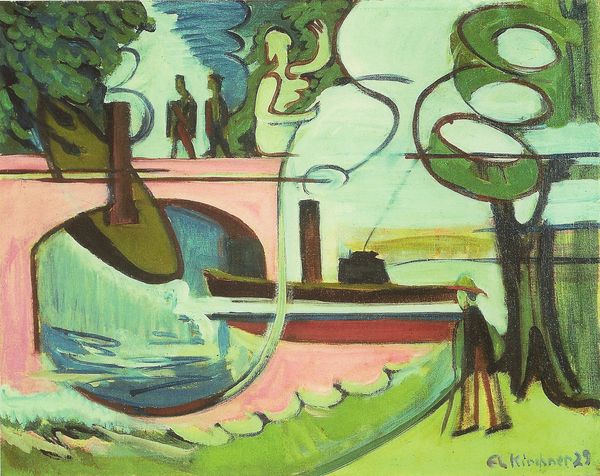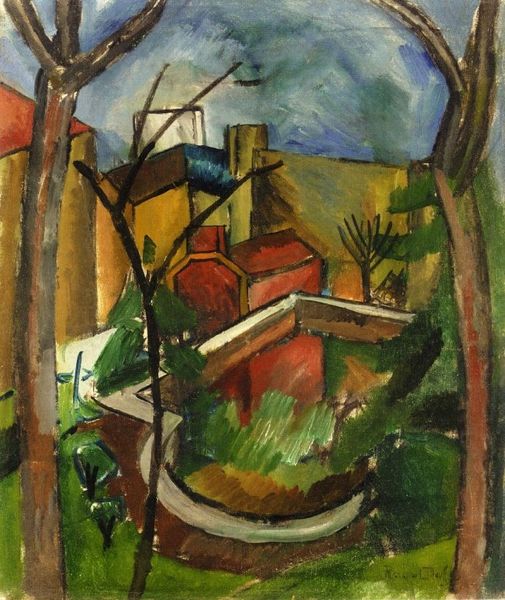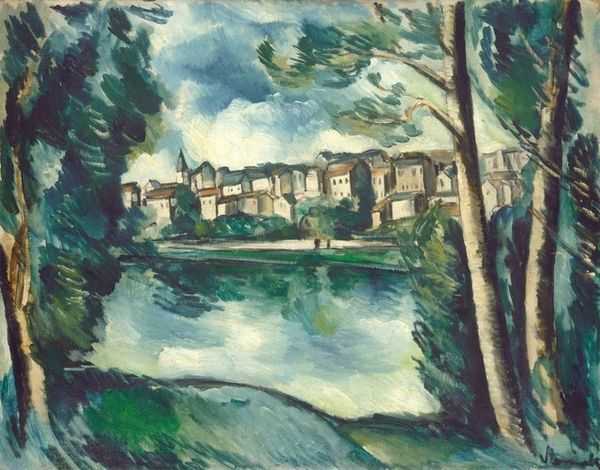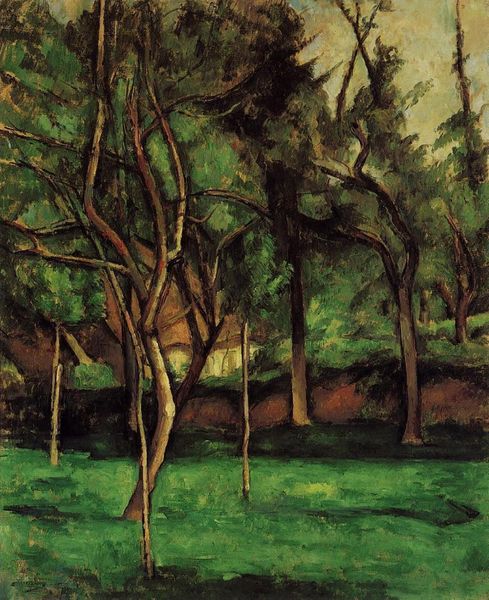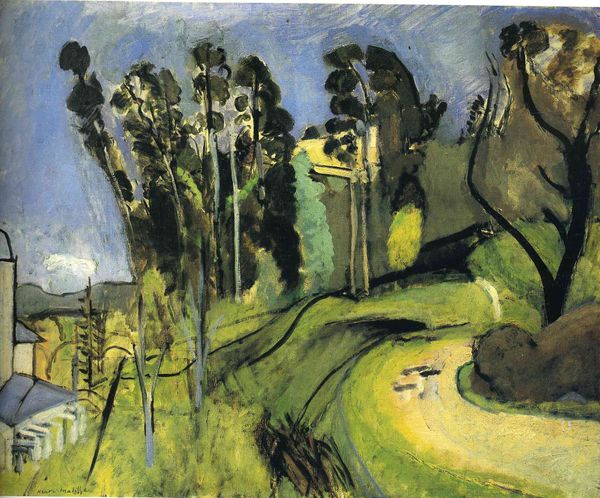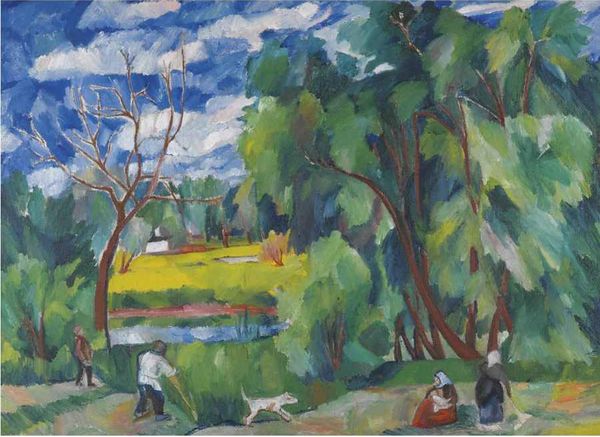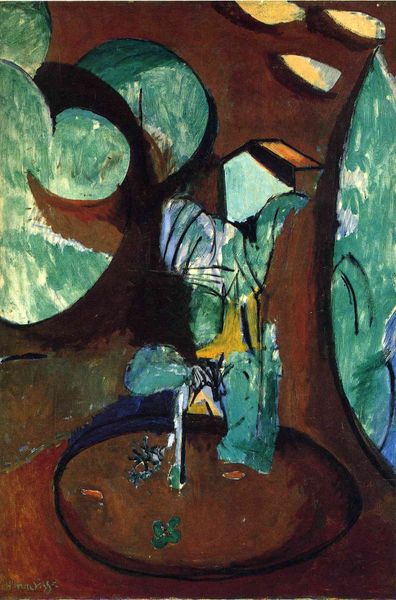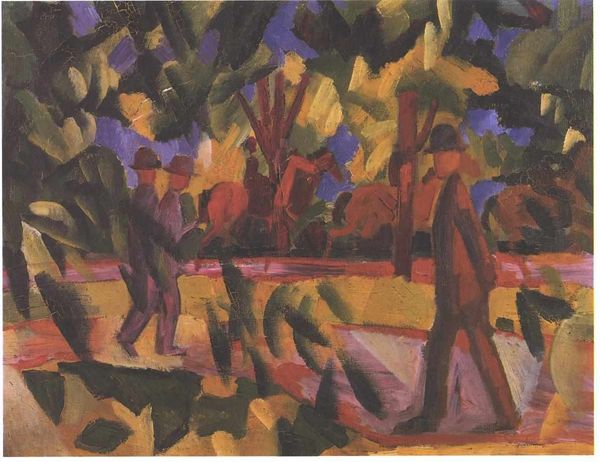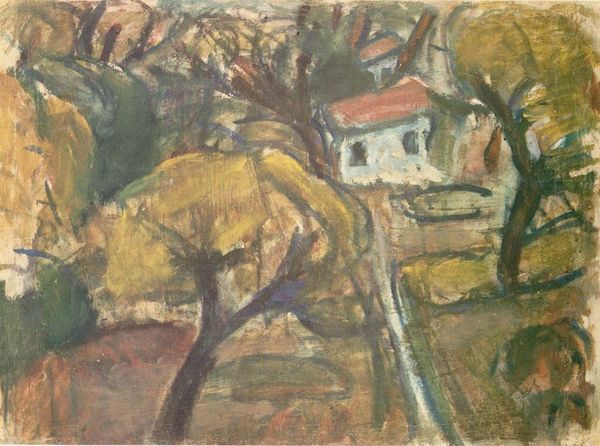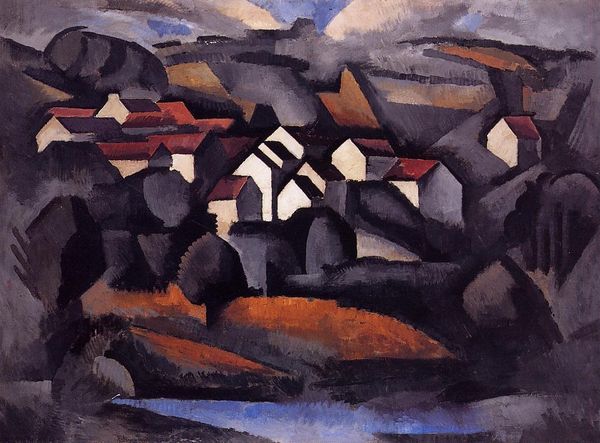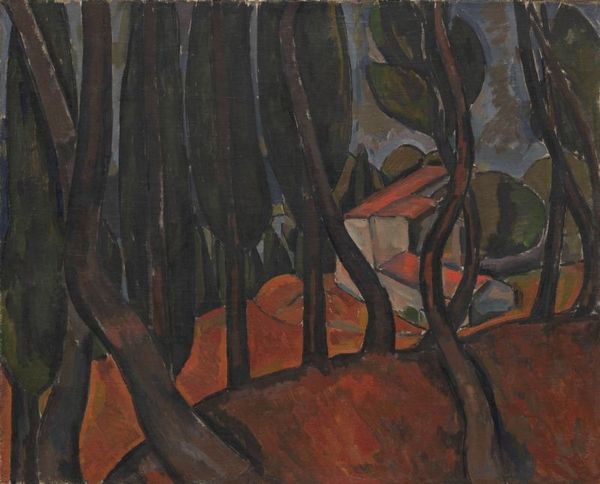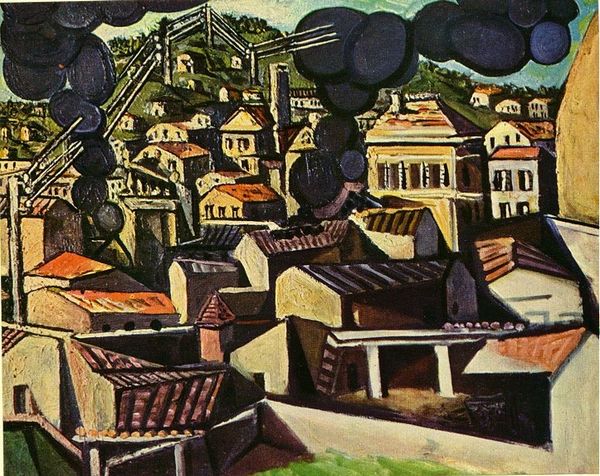
Copyright: Public domain US
Curator: Today, we’re looking at André Derain’s “Trees on the Banks of the Seine,” painted in 1913. It's currently held at the Staatsgalerie Stuttgart in Germany. Editor: Immediately striking is the vibrant, almost clashing use of greens. It creates a feeling of intense summer humidity, thick and enveloping. Curator: Derain was a key figure in the Fauvist movement, which emphasized strong color over realistic representation. Think of it as a challenge to the academic painting that dominated art institutions at the time. The radical brushstrokes declared the artist's freedom. Editor: Exactly. Note how the artist doesn't try to mimic reality, but rather gives us the essence of it through colour. The strokes are bold and direct. It seems almost as if Derain wants to showcase the act of painting itself, not just the scene he's depicting. It's definitely Post-Impressionist in how it renders emotion with color and form. Curator: And context. The river Seine, the iconic landmark, turns the view into a statement about French national identity during a period of immense cultural change, even turbulence, just before the Great War. Editor: It does speak of something just before transformation; there is a kind of rawness and anticipation in it. Also, observe the composition; despite its initial density, the lighter hues on the buildings on the other side of the river give just the right amount of breathable negative space. It has an internal, almost pulsating rhythm. Curator: Derain found himself drafted into the war a year after making this painting. So what this striking painting shows may be also interpreted as the last moments of insouciance that shaped an entire generation of artists. Editor: Yes. This painting does much more than represent "Trees on the Banks of the Seine"; it becomes an embodiment of a brief period in art history. I see now the art-historical, the art-historical moment of which you speak, and in these raw lines and clashing colors the end of something important.
Comments
No comments
Be the first to comment and join the conversation on the ultimate creative platform.

